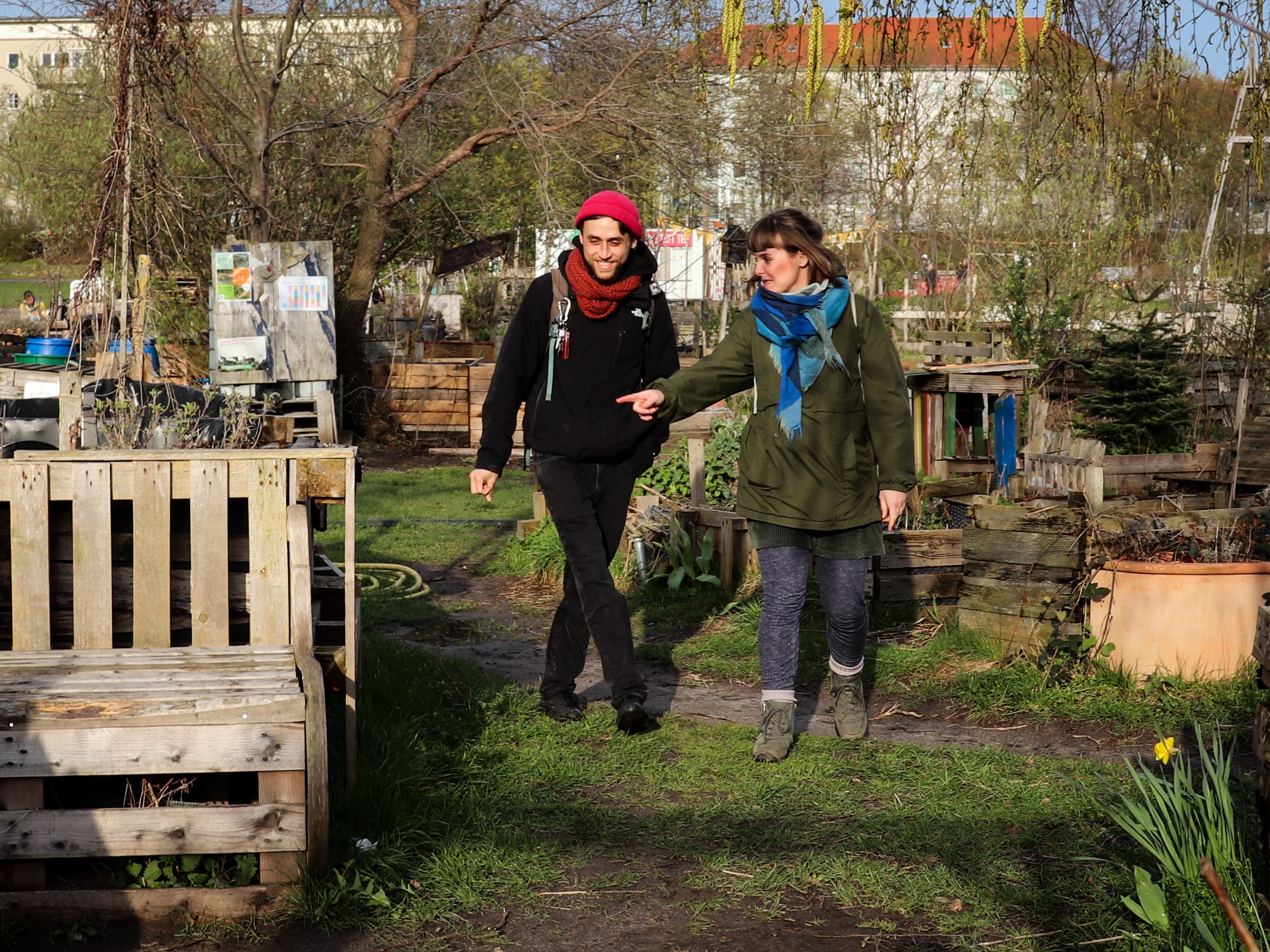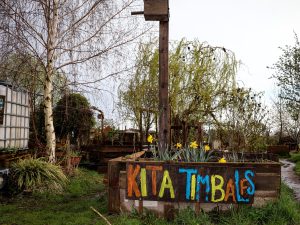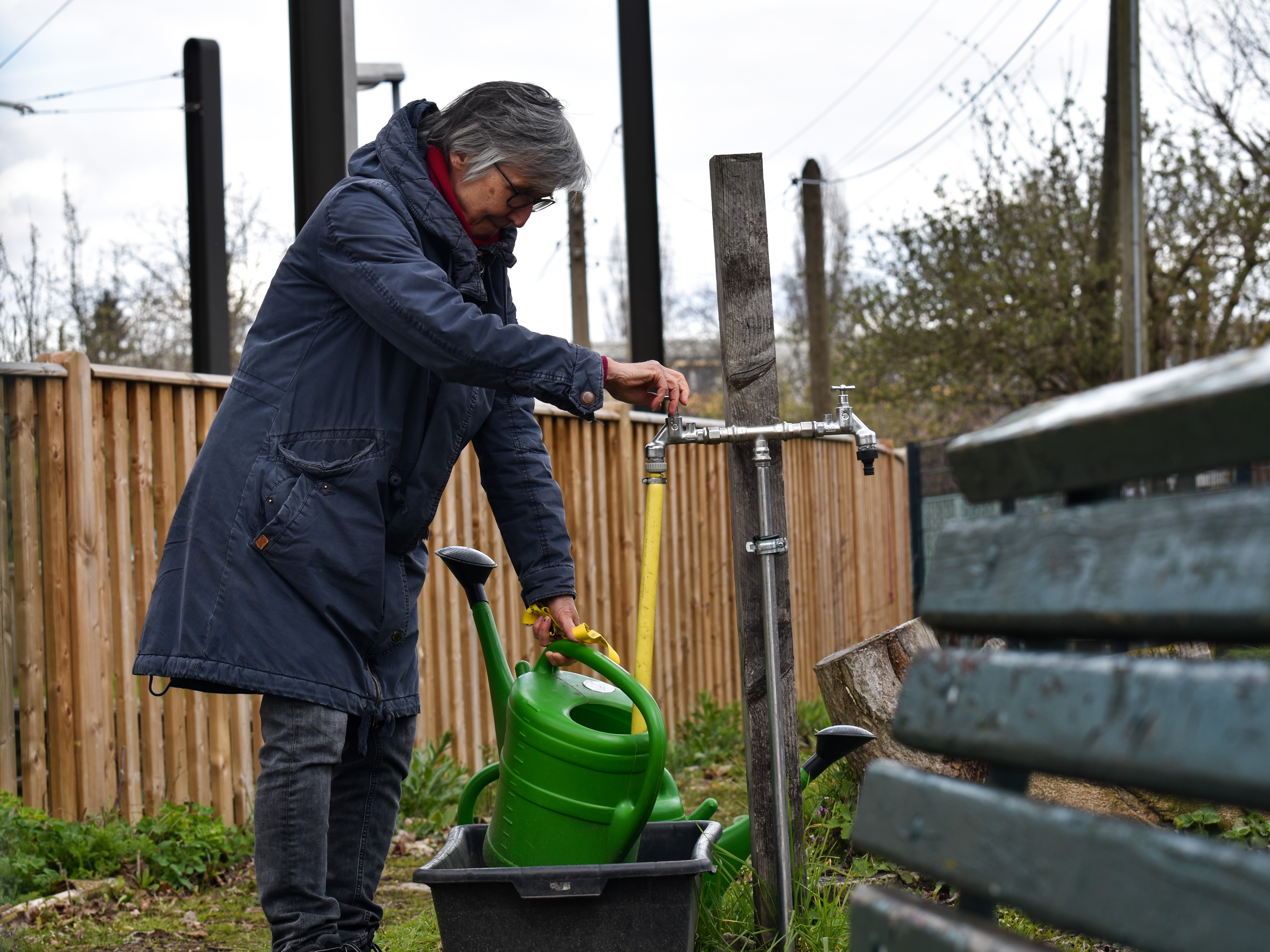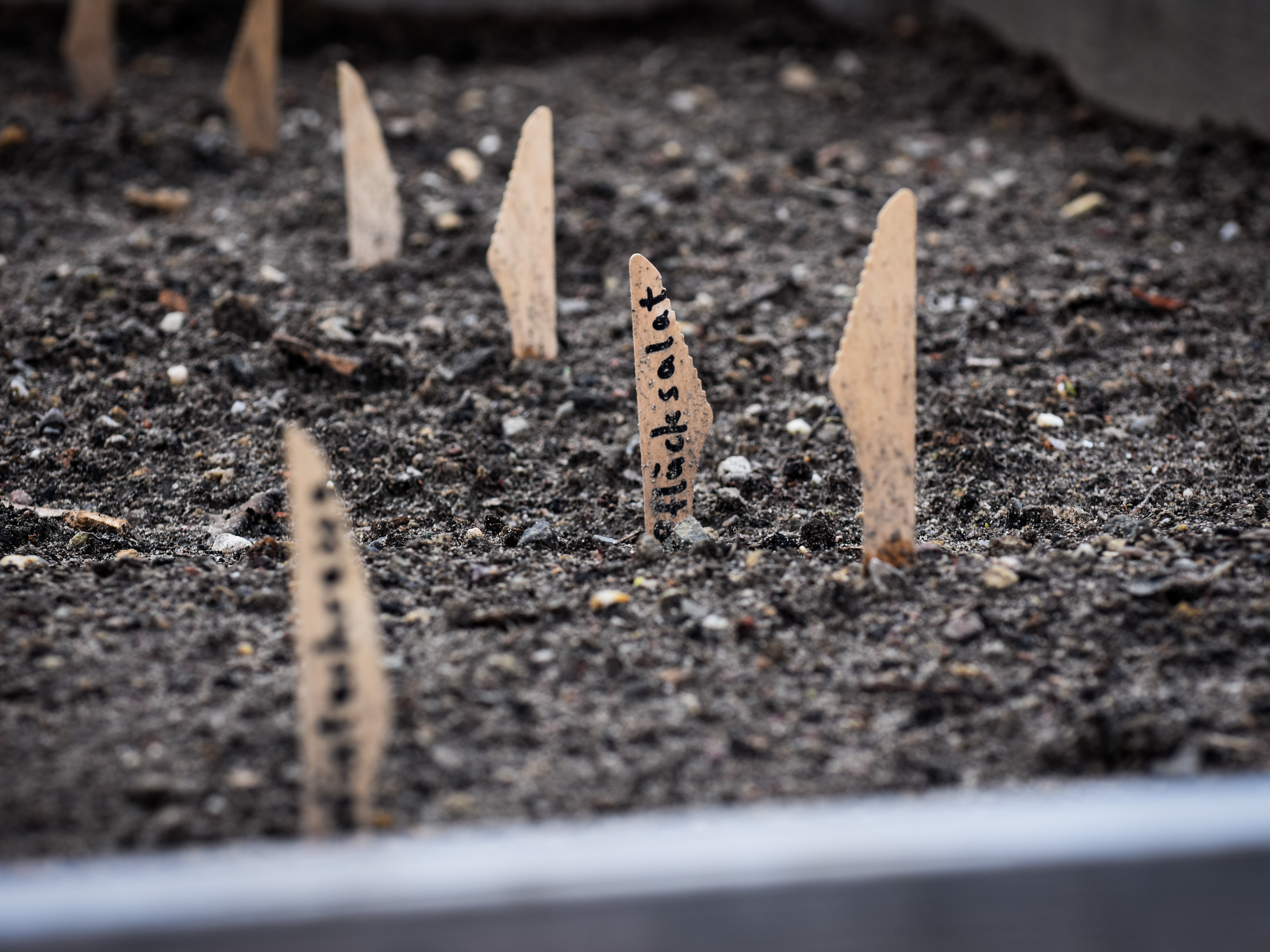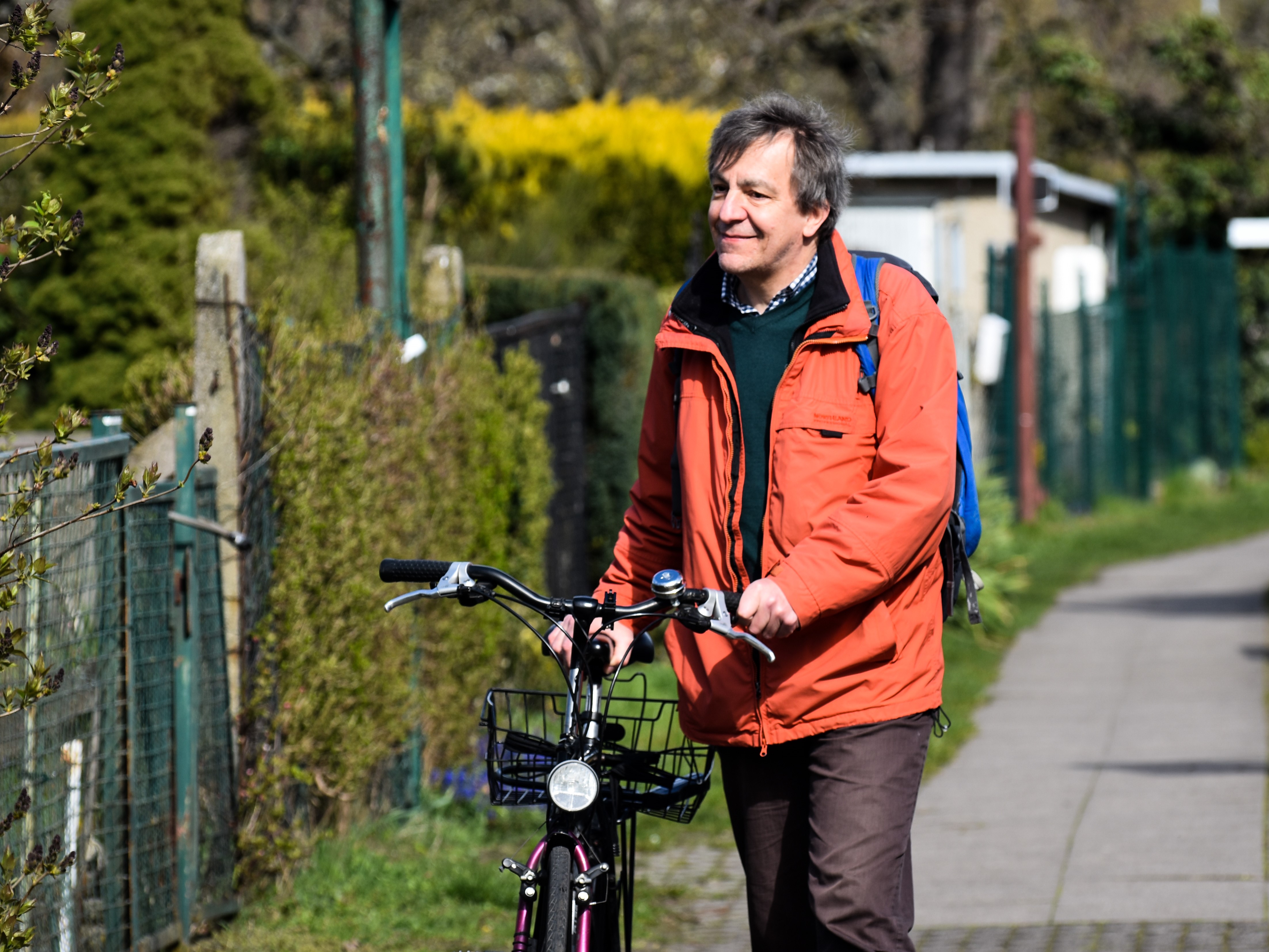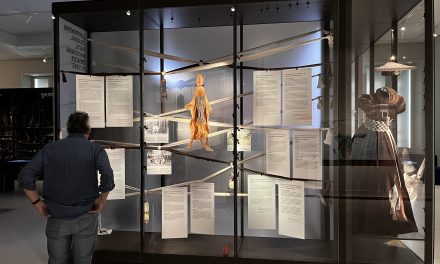Self-made raised beds, seating areas, flowers and plants everywhere: community gardens provide green spaces in the urban jungle. But one thing is even more important: they contribute to the society and promote inclusion as three examples in Berlin show.
Colorful, creative, diverse: Germany’s capital Berlin has a lot to offer. While most people only think about the artistic or the clubbing scene when talking about the city, another special feature must be mentioned: its urban gardening scene. According to Marion Ernwein, researcher at the Department of Geography and Environment at the Université de Genève in Switzerland, the term “urban gardening” combines inner city allotments, practices related to the growing of food within and near cities, as well as community gardens.
These community gardens are collectively managed and usually occupy a small area shared by all gardeners. They first appeared in the 70s in North America, while Germany, Belgium and The Netherlands focused more on allotment gardens, children farms or adventure playgrounds. In the 80s, the trend came to Germany and in 1999, Berlin’s first community garden called “Kid’s Garden” was created on a field site in Neukölln. Today, more than 200 community gardens can be found in Berlin, according to the city.
The positive effects of these gardens are huge: “We need nature and gardens in the city for biodiversity and species diversity”, explains Klaus Neumann, president of the “Deutsche Gartenbau Gesellschaft 1822 e. V.“ (Eng.: German Garden Society). Moreover, community gardens contribute to a healthy urban climate, promote togetherness, and revitalize public spaces that are used by people and animals. Thus, they can be used as inclusive tools for community building and social integration, as Ernwein writes. That usage can be seen in the community garden of the club “Gemeinschaftsgarten Allmende Kontor e. V.” in Berlin’s district Tempelhof, in the so-called “Naschgarten” in Marzahn-Hellersdorf, and in the “Schleifengarten” in Pankow. All three gardens contribute to the societies of its districts and organize events or start projects to include everyone who is interested.
Allmende-Kontor
The former airport Tempelhof is one of the largest open city places in the world and a well-known spot in Berlin. Here, one of the biggest community gardens in Berlin can be found: Allmende-Kontor. The garden was founded in 2011 with 10 beds and about 20 people. Today, the garden occupies an area of 5000 square meters, has more than 250 beds and more than 500 members.
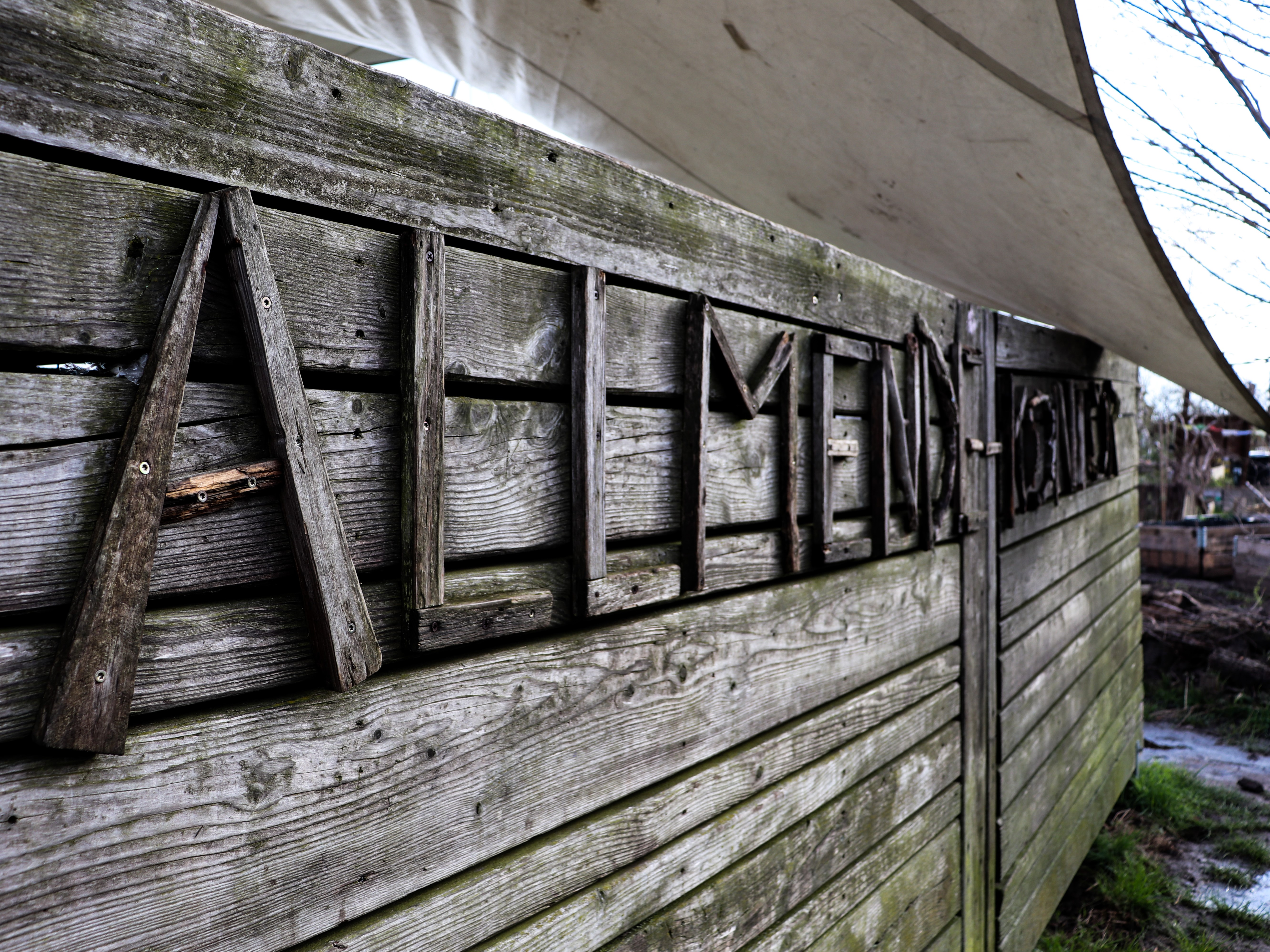 Allmende-Kontor: name of the garden and official club since 2014
Allmende-Kontor: name of the garden and official club since 2014
Despite its large size, the community garden is self-organized by the club “Gemeinschaftsgarten Allmende-Kontor e. V.”, which was founded in 2014. For better organization, the garden is divided into nine different color groups with 20 to 40 beds each, summarized in a bed plan. “We encourage people to organize themselves. So, different people are in charge of the groups, and they can implement their ideas without talking to the organization team”, explains Juan Coka, member of the organization team. “The groups are also part of our water calendar. So, each group must fill the water containers three or four times a year”, adds Kristin Hensel, another member of the organization team.
|
|
|
|
|
|
The community garden is open for everyone. From kindergarten kids, who farm their own bed, over people of the neighborhood to gardeners from districts far away like Wedding. Also, tourists are welcomed in the garden. Further information about the community can be found in the audio clip with Juan and Kristin:
Naschgarten
Covering 1.100 square meters, the Naschgarten is one of the three paradise gardens in Berlin’s district Marzahn-Hellersdorf. In 2018, the project was set up by the district which invested 445.000 Euros to implement the three gardens. The Naschgarten was inaugurated on September 3, 2019, and since the end of the official project, the garden has been self-organized by six families who cultivate more than 20 beds. “It all started on the playground. Our families knew each other from there and then the men got together and said, ‘well, we can do something together sometime.’ That’s how the Naschgarten grew”, tells gardener Torsten.
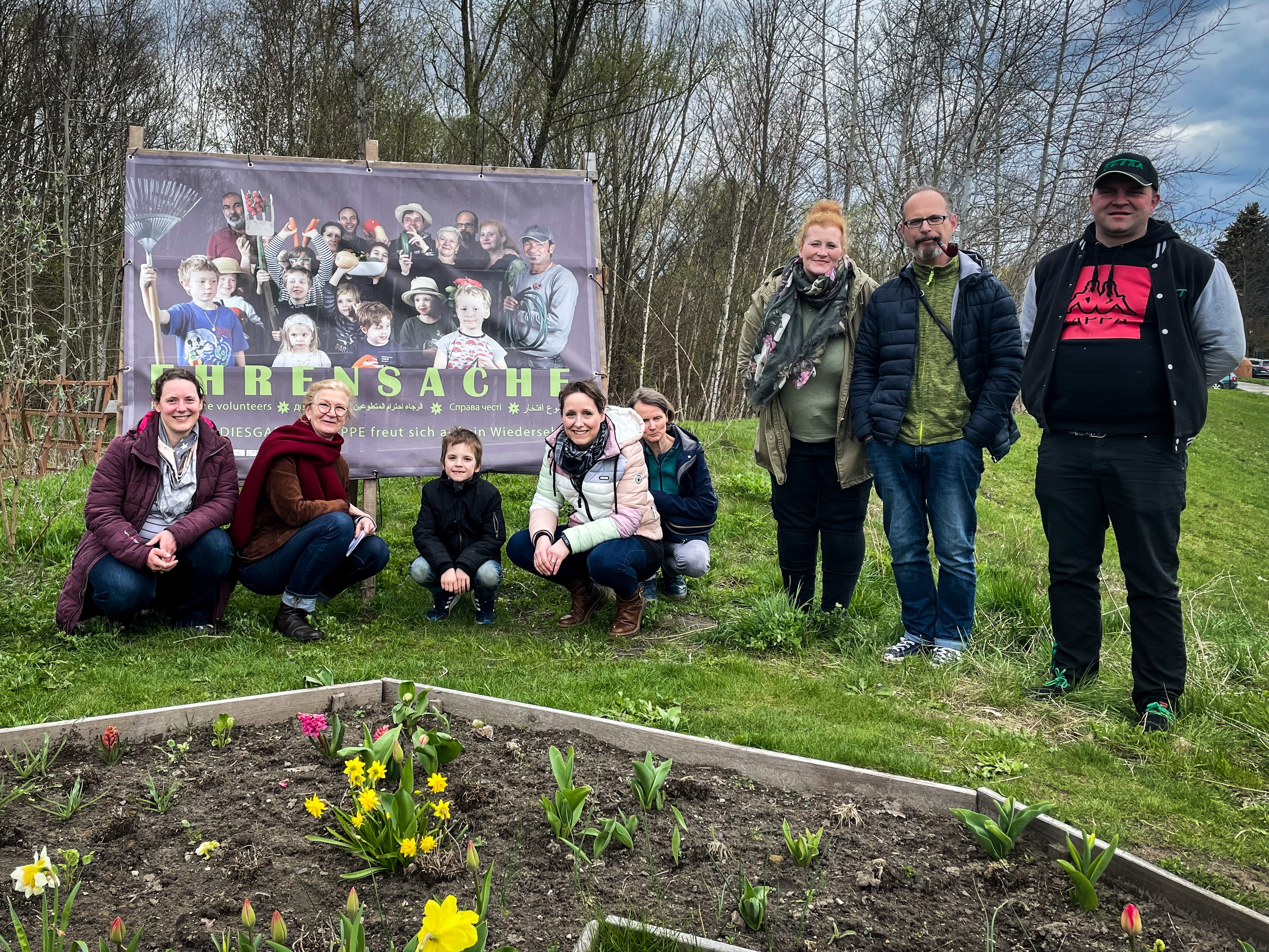 One family: the community presents itself on a poster
One family: the community presents itself on a poster
In the last few years, the families have removed a lot of bushes and shrubs, set up a water pump, and invented a yearly movie streaming. “We have shed a lot of blood and sweat”, says Torsten. Daniela, another member of the garden, adds: “It’s really nice that we have the opportunity to come to the garden. You just pack a coffee and come here. And then you’re not alone and you can enjoy it.”
|
|
|
In the audio clip, former project manager Su Schnorbusch and community member Kerstin reveal more details about the community of the garden:
Schleifengarten
The community garden Schleifengarten is located in Berlin’s district Pankow in the former GDR. It’s the only community project between many allotment gardens of the club “Bornholm I” and takes on an area of 800 square meters. “There used to be garages here that were torn down in February 2021. Then we had to clean up and take away all the garbage”, says Katharina Jenkner, board of the association “Schleifengarten e.V.” and member of the community garden. How the garden looked like at the beginning can be seen here: 360° Schleifengarten
|
|
|
The name of the urban garden comes from its location right next to a tram loop in the Björnsonstraße, which is called “Schleife” in German. Around 25 to 30 neighbors are part of the community. They spend their free time developing the garden, and taking care of the ten beds. “We work with raised beds only because we don’t know what is in the ground. So, everything that is edible can’t be planted in the ground where it could be contaminated”, explains Katharina.
|
|
|
Next to its own community, the garden is part of the project Gärtnern verbindet, which translates to “gardening connects”. The project was started on the behalf of the Berlin Senate Department for the Environment, Mobility, Consumer and Climate Protection. Its goal is to integrate refugees and immigrants into Berlin’s society through gardening, and to create opportunities for everyone. “We try to open doors for people from outside who are interested to join”, says Thomas Fiedler, expert in consulting and manager of the project. In the next audio clip, he talks more about the project:
Although community gardens create togetherness and help to include immigrants into society, they face a problem, as more and more people are moving to the city every year. “In 2050, around 82 percent of people will live in cities”, says Klaus Neumann. “This means that more and more use offers compete on the remaining space. Then, there is usually one loser and that are parks, cemeteries, as well as allotment and community gardens.” Therefore, new concepts for community gardens must be developed in the future. According to Neumann, it would be conceivable to use the flat roofs of supermarkets or furniture stores. “In the future, there should no longer be a flat roof area that is not greened,” says the expert.
Whatever the future of community gardens may look like, one thing is for sure: cities need gardens and places where people can come together and grow together.

Text & photos: Roosa Bröijer & Chelsea Walpert
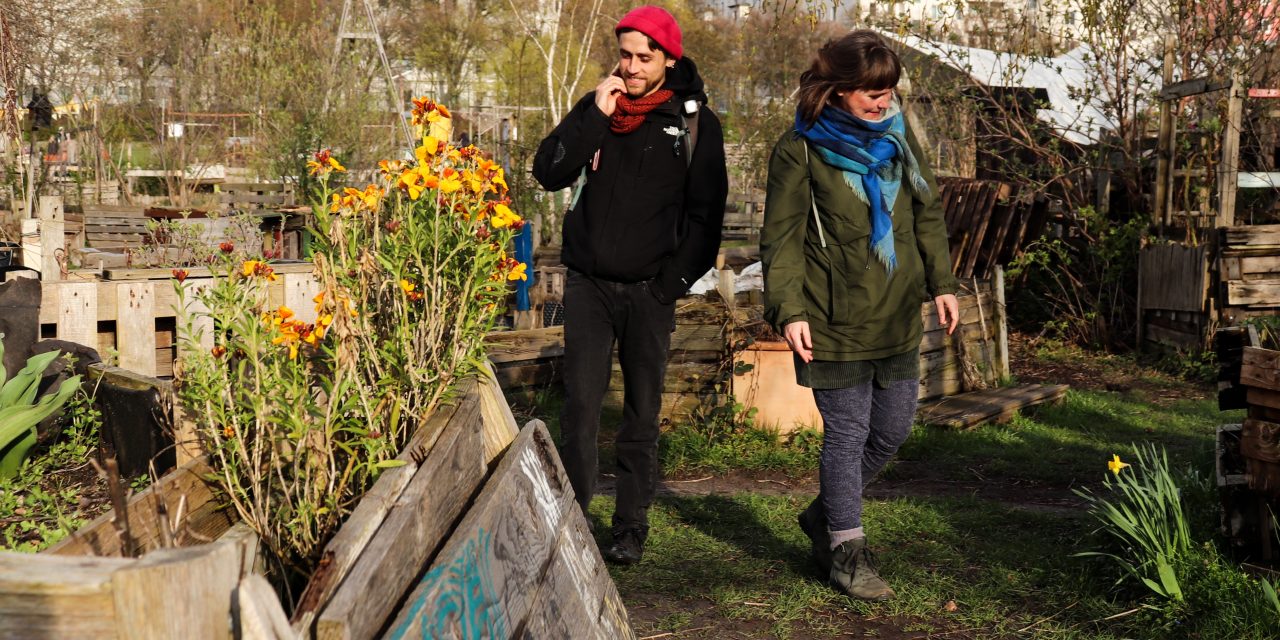
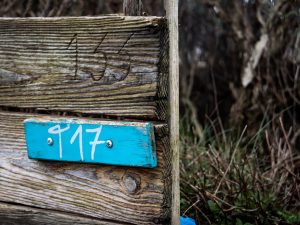 Well organized: every bed has its own color and number
Well organized: every bed has its own color and number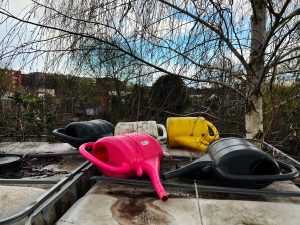 Very important: the water containers must be filled by the groups
Very important: the water containers must be filled by the groups